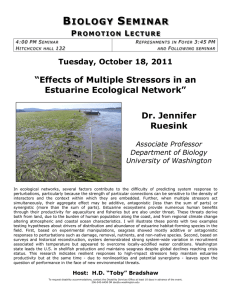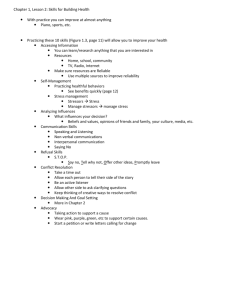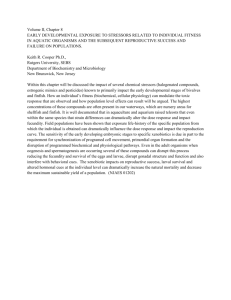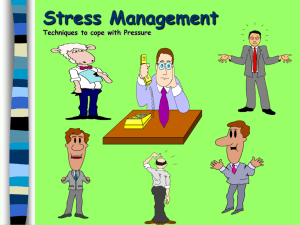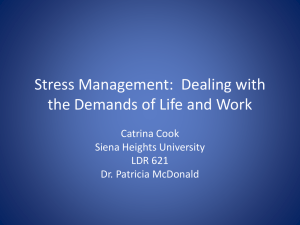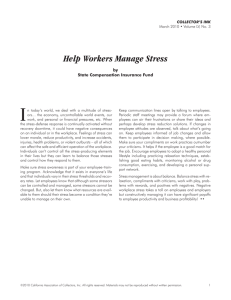THE EFFECTS OF ANTHROPOGENIC STRESSORS ON Filimonova Valentina
advertisement
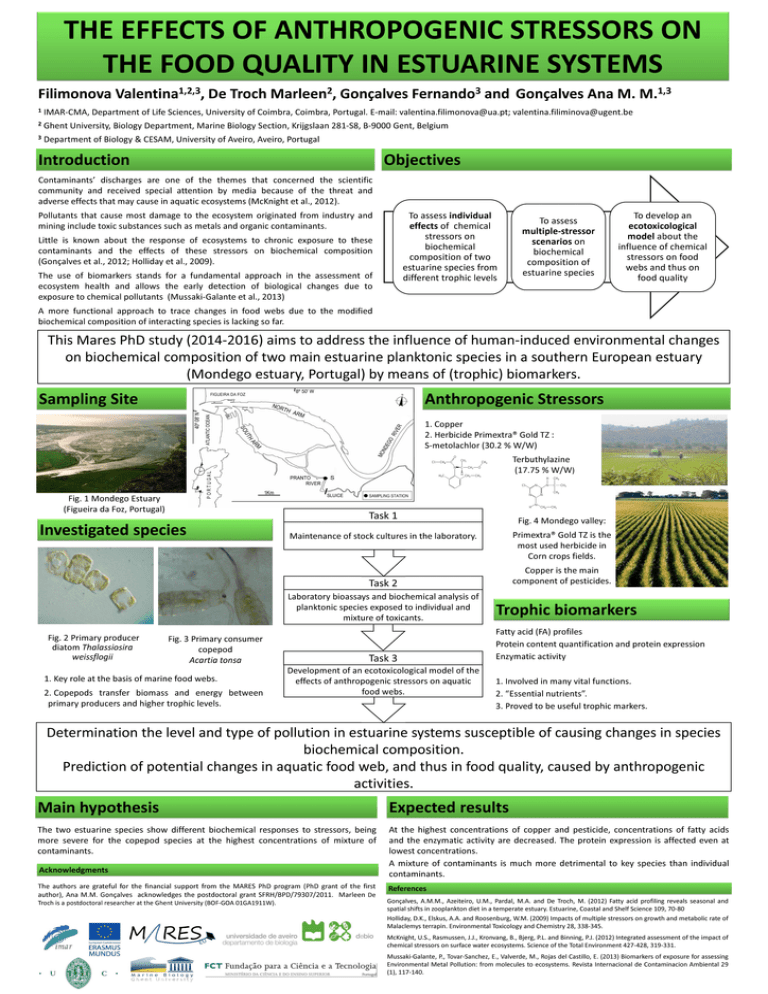
THE EFFECTS OF ANTHROPOGENIC STRESSORS ON THE FOOD QUALITY IN ESTUARINE SYSTEMS Filimonova Valentina12 3, De Troch Marleen2, Gonçalves Fernando3 and Gonçalves Ana M. M .13 1 IMAR-CMA, Department of Life Sciences, University of Coimbra, Coimbra, Portugal. E-mail: valentina.filimonova@ua.pt; valentina.filiminova@ugent.be 2 Ghent University, Biology Department, Marine Biology Section, Krijgslaan 281-S8, B-9000 Gent, Belgium 3 Department of Biology & CESAM, University of Aveiro, Aveiro, Portugal Introduction Objectives Contaminants' discharges are one of the themes that concerned the scientific community and received special attention by media because of the threat and adverse effects that may cause in aquatic ecosystems (McKnight et al., 2012). Pollutants that cause most damage to the ecosystem originated from industry and mining include toxic substances such as metals and organic contaminants. To assess individual effects o f chemical stressors on biochemical com position o f tw o estuarine species from different trophic levels Little is known about the response of ecosystems to chronic exposure to these contaminants and the effects of these stressors on biochemical composition (Gonçalves et al., 2012; Holliday et al., 2009). The use of biomarkers stands for a fundamental approach in the assessment of ecosystem health and allows the early detection of biological changes due to exposure to chemical pollutants (Mussaki-Galante et al., 2013) To develop an ecotoxicological model about the influence o f chemical stressors on food webs and thus on food quality To assess multiple-stressor scenarios on biochemical com position o f estuarine species A more functional approach to trace changes in food webs due to the modified biochemical composition of interacting species is lacking so far. This Mares PhD study (2014-2016) aims to address the influence of human-induced environmental changes on biochemical composition of two main estuarine planktonic species in a southern European estuary (Mondego estuary Portugal) by means of (trophic) biomarkers. FIGUEIRA DA FOZ Sampling Site 8“ 50' W 0> Anthropogenic Stressors 1. Copper 2. Herbicide Primextra® Gold TZ : S-metolachlor (30.2 % W/W) 0 H / C l— C H ,— C CHs Terbuthylazine (17.75 % W/W) N ^ C — CH2— 0 PRANTO RIVER H,C„ S V SLUICE Fig. 1 Mondego Estuary (Figueira da Foz, Portugal) C H ,— CH, H n Cl Nv CH3 — C — CH3 Iim r ' CH, N SAMPL NG STAT ON / N H Task 1 Investigated species ? < '• CH, * \ C H ,— CH, Fig. 4 Mondego valley: Primextra® Gold TZ is the most used herbicide in Corn crops fields. Maintenance of stock cultures in the laboratory. j Copper is the main component of pesticides. # Task 2 > i ,1X? % A Laboratory bioassays and biochemical analysis of planktonic species exposed to individual and mixture of toxicants. < Trophic biomarkers Fatty acid (FA) profiles Fig. 2 Primary producer diatom Thalas weissflogii Fig. 3 Primary consumer copepod Acartia tonsa 1. Key role at the basis of marine food webs. 2. Copepods transfer biomass and energy between primary producers and higher trophic levels. Protein content quantification and protein expression Task 3 Development of an ecotoxicological model of the effects of anthropogenic stressors on aquatic food webs. Enzymatic activity 1. Involved in many vital functions. 2. "Essential nutrients". 3. Proved to be useful trophic markers. Determination the level and type of pollution in estuarine systems susceptible of causing changes in species biochemical composition. Prediction of potential changes in aquatic food web, and thus in food quality, caused by anthropogenic activities. Main hypothesis Expected results The two estuarine species show different biochemical responses to stressors, being more severe for the copepod species at the highest concentrations of mixture of contaminants. At the highest concentrations of copper and pesticide, concentrations of fatty acids and the enzymatic activity are decreased. The protein expression is affected even at lowest concentrations. Acknowledgments A mixture of contaminants is much more detrimental to key species than individual contaminants. The authors are grateful fo r th e financial support from th e MARES PhD program (PhD grant o f th e firs t References author), Ana M .M . Gonçalves acknowledges th e postdoctoral grant SFRH/BPD/79307/2011. Troch is a postdoctoral researcher at the Ghent University (BOF-GOA 01GA1911W). M arleen De Gonçalves, A.M.M., Azeiteiro, U.M., Pardal, M.A. and De Troch, M. (2012) Fatty acid profiling reveals seasonal and spatial shifts in Zooplankton diet in a temperate estuary. Estuarine, Coastal and Shelf Science 109, 70-80 Holliday, D.K., Elskus, A.A. and Roosenburg, W.M. (2009) Impacts of multiple stressors on growth and metabolic rate of Malaclemys terrapin. Environmental Toxicology and Chemistry 28, 338-345. m ar u m m i McKnight, U.S., Rasmussen, J.J., Kronvang, B., Bjerg, P.L. and Binning, P.J. (2012) Integrated assessment of the impact of chemical stressors on surface water ecosystems. Science of the Total Environment 427-428, 319-331. European Commission ERASMUS MUNDUS mm M a r i n e Ghent Bi o l ogy University FC T Fundaçao para a Ciência e a Tecnología Mussaki-Galante, P., Tovar-Sanchez, E., Valverde, M., Rojas del Castillo, E. (2013) Biomarkers of exposure for assessing Environmental Metal Pollution: from molecules to ecosystems. Revista Internacional de Contaminación Ambiental 29 (1), 117-140.
